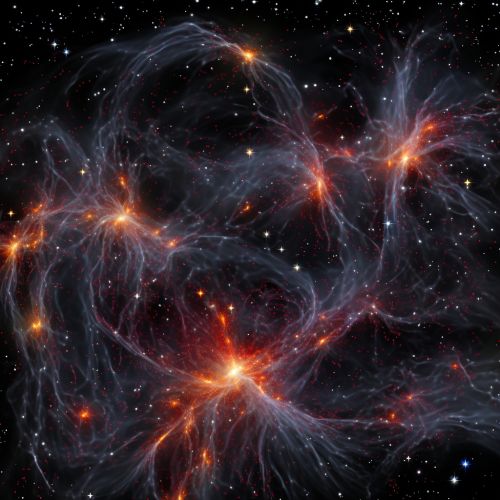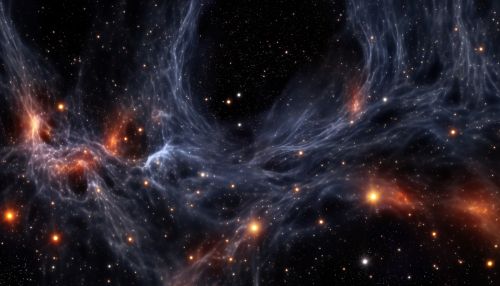Large-Scale Structure of the Universe
Overview
The large-scale structure of the universe is the field of astrophysics that studies the distribution of matter in the universe and the observational characteristics of large-scale structures. These structures include galaxies, clusters of galaxies, and large voids. The study of these structures uses the principles of physical cosmology, such as the cosmological principle, which states that the universe is homogeneous and isotropic on large scales.
Cosmological Principle
The cosmological principle is a cornerstone of modern cosmology. It asserts that the universe, when viewed at sufficiently large scales, appears the same no matter where the observer is located. This principle is supported by observations of the cosmic microwave background radiation, which is nearly uniform in all directions. However, the cosmological principle does not preclude the existence of structures at smaller scales, such as galaxies and clusters of galaxies.
Large-Scale Structures
Large-scale structures in the universe are made up of galaxies and galaxy clusters, which are interconnected by filaments of dark matter and interspersed with large voids. These structures are often referred to as the "cosmic web".


Galaxies
A galaxy is a gravitationally bound system of stars, stellar remnants, interstellar gas, dust, and dark matter. Galaxies are categorized according to their visual morphology as elliptical, spiral, or irregular. They can also be classified by their activity, such as star-forming or active galaxies.
Galaxy Clusters
A galaxy cluster is a structure that consists of hundreds to thousands of galaxies bound together by gravity. Galaxy clusters are among the largest structures in the universe and serve as important sites for the study of galaxy formation and evolution.
Cosmic Filaments
Cosmic filaments are the largest known structures in the universe. They are composed of dark matter with galaxies embedded within them. These filaments form the boundaries between large voids in the universe.
Cosmic Voids
Cosmic voids are vast spaces between filaments in the large-scale structure of the universe, which contain very few or no galaxies. Voids typically have a diameter of 10 to 100 megaparsecs; particularly large voids, defined by the absence of rich superclusters, are sometimes called supervoids.
Observations and Measurements
Observations of the large-scale structure of the universe involve the use of various astronomical surveys to map the distribution of galaxies, galaxy clusters, and cosmic voids. These surveys include the Sloan Digital Sky Survey and the 2dF Galaxy Redshift Survey. The data from these surveys has provided evidence for the cosmological principle and has helped to constrain cosmological models.
Theoretical Models
Theoretical models of the large-scale structure of the universe are based on the principles of physical cosmology, such as the Big Bang theory and the theory of cosmic inflation. These models predict the distribution of matter in the universe and the formation of large-scale structures.
Future Directions
Future directions in the study of the large-scale structure of the universe include the use of next-generation telescopes and surveys, such as the Euclid mission and the Large Synoptic Survey Telescope. These instruments will provide unprecedented data on the distribution of galaxies and the cosmic web, helping to refine our understanding of the universe's structure and evolution.
